This blog was written for our members by Jo Crabbe and Penny Chan, with input from other Library staff and volunteers.
Become a member for early access to stories like this.
Step behind-the-scenes as we tour the Library from Dome to Catacomb. We invite you to explore the layers of history that make up the Library, beginning with an Acknowledgement of Country:
State Library Victoria acknowledges the traditional lands of all the Victorian Aboriginal Clans, and their cultural practices and knowledge systems.
We recognise that our collections hold traditional cultural knowledge belonging to Indigenous communities in Victoria and around the country. We support communities to protect the integrity of this information, gathered from their Ancestors in the colonial period.
We pay our respects to their Elders, past and present, who have handed down these systems of practice to each new generation for millennia.
February 2023 sees another run of the ever-popular Dome to Catacomb tour, which explores some of the best loved and hidden nooks of the Library from top to bottom. Opening in 1856, it’s not surprising that there’s more history in these walls than can be witnessed in one tour alone. So, for our most interested of Library patrons, we’ve curated a list of some tour highlights with links to even more stories.
Step this way and lose yourself among some good books …
Hansen Hall
The Dome to Catacomb tour begins in what is today known as Hansen Hall. Originally, this hall was used as a space for a sculpture gallery (pictured below). It went on to house the Industrial and Technological Museum, banks of lockers for visitors, and now functions as a collaborative working space. It was previously known as ‘Palmer Hall’. (Slide the line in the image below to see the transformation from old to new!)
1. The Sculpture Gallery – Public Library Melbourne, 1866, Illustrated newspaper file. Australian news for home readers. Engraving by Frederick Grosse; IAN27/07/66/SUPP. 2. View of Hansen Hall, date unknown. Image courtesy of State Library Victoria
The Dome – La Trobe Reading Room
When we think of State Library Victoria, we picture the soaring majesty of the Dome, also known as the La Trobe Reading Room. Though it has become the most well-known of the Library’s reading rooms, the Dome was a later addition, only opening on November 14, 1913. In fact, it is built atop the old grounds of the Rotunda and Great Hall, which were opened in May, 1866 by Sir Redmond Barry, founder of the Library. Barry had harboured hopes that the Great Hall would last “for centuries”; in the end, it was demolished in 1899. Though the Great Hall did not see the turn of the century, you can re-live the hopes of the day by reading Barry’s full Address to the workmen employed in building the Great Hall of the Melbourne Public Library and Museum, in Melbourne, Victoria.
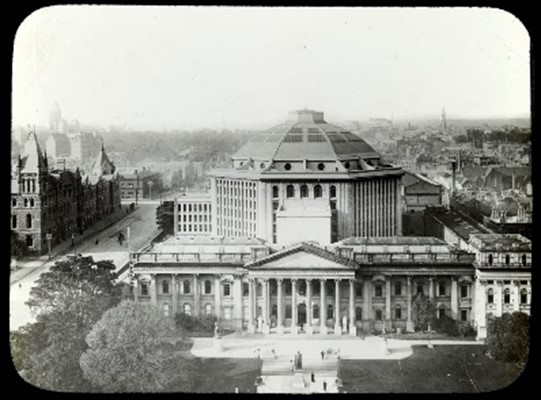
With all the stories that have transpired in – and been inspired by – the Dome since its establishment, it’s fitting that it helms this tour of the Library’s front of house spaces. To fully appreciate the views, let’s start from level 6 and work our way down.
Close up of the Dome
Whether the Melbourne skies are bright with sunshine or overcast, the Dome glows with natural light from the windows high above. Nowhere is this more apparent than from the annulus, which encircles the Domed Reading Room on levels 3, 4, 5 and 6.

It might surprise you to learn that there was a time when the windows had to be covered to protect the books from water leaks. The glass in the roof was reinstated in 2003 as part of a $30 million redevelopment.

Did you know? The original dome was built entirely of reinforced concrete. At the time of building, it was the largest reinforced concrete dome in the world, measuring 35 metres in diameter.
When the Dome celebrated its centenary on 13 November, 2013, we marked this milestone with a few commemorative works:
- ‘A Melbourne icon turns 100 today’ Library blog piece
- Special features in the December 2013 (No.92) issue of the La Trobe Journal; the first two articles written by Miles Lewis and Harriet Edquist respectively
- The Dome100 website, which includes the history of the Dome’s architecture, and stories from people who have been inspired by the Dome.
You can view more photographs of the Dome in its various life stages from our catalogue.
The Shakespeare Window
Views aside, the main draw of level 6 of the Dome is the Shakespeare Window.
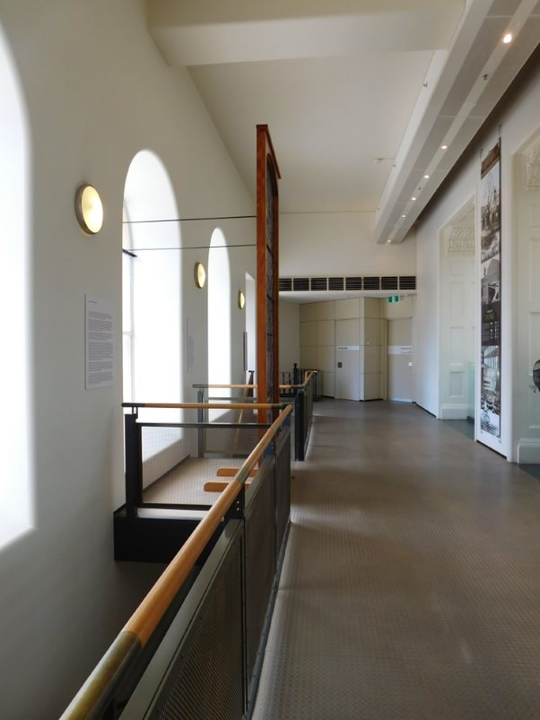
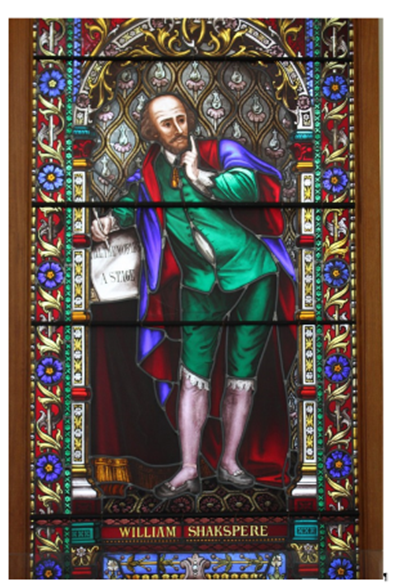
The window was commissioned by George Coppin (1819-1906) for the facade of the new Apollo Music Hall in Bourke Street. It is notable as one of the earliest stained glass windows made in Melbourne, as well as being an item with a uniquely chequered past.
Among his other achievements, Coppin is credited as one of the founders of live theatre in Melbourne. He bequeathed the window to the Library in 1960, and we also hold Coppin’s Papers, 1814-1965 in our Manuscripts Collection, an archive which features diaries, playbills, playscripts, music scores, costume and scenery designs, posters, and even material relating to the theatrical career of Bland Holt, among other delights. Continuing this connection, one of the 2017 Library Fellows, Dr Robert Reid researched and wrote Mostly untrue (The exaggerated life of George Coppin), a play exploring Coppin’s life and career.
The window is a colourful testament to the Library’s enduring role in the Victorian arts and theatre scene. Explore more with our Theatre and performance in Victoria research guide.
How it used to be
From the unyielding wooden seats to the hand-wound clock, there are many artefacts in the Dome that remain from its beginnings in 1913. (For those redecorating in the style of the Dome, the original furniture was made from Queensland Silky Oak.) Look carefully and you’ll uncover another layer of history.
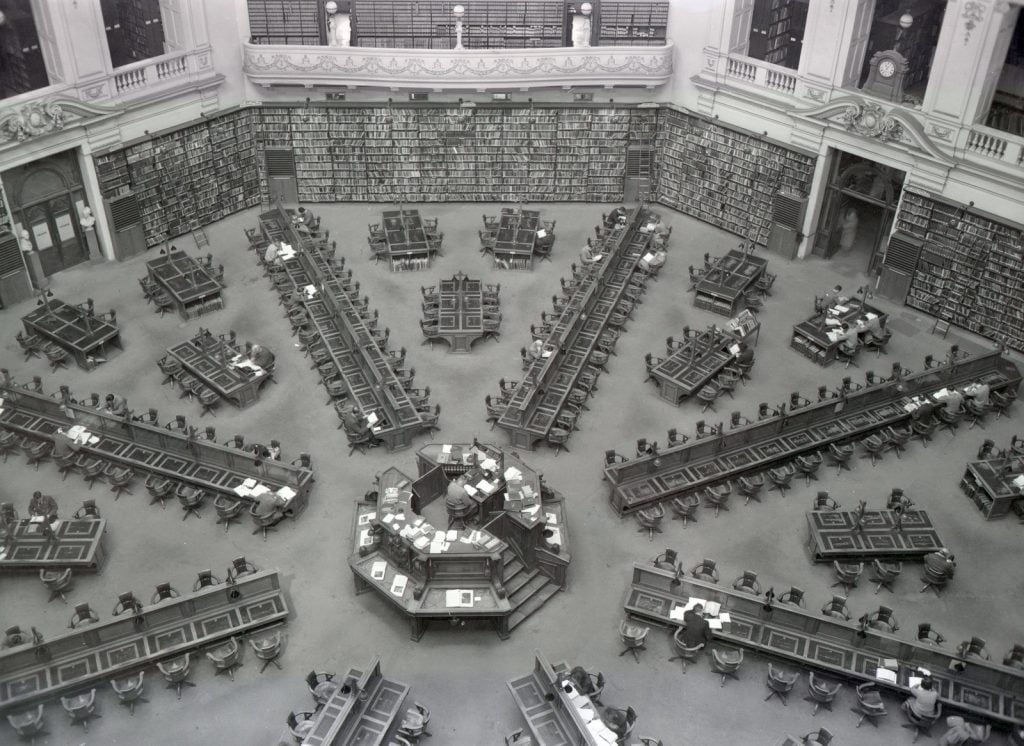
From the stacks
In the corner, there is a narrow circular staircase that winds all the way down from the annulus to level one in the basement in a tight spiral. There was a time when this was one of the four staircases staff used to scamper up and down to fetch books and other requested materials for patrons. Due to current health and safety, the spiral stairs are no longer in use.
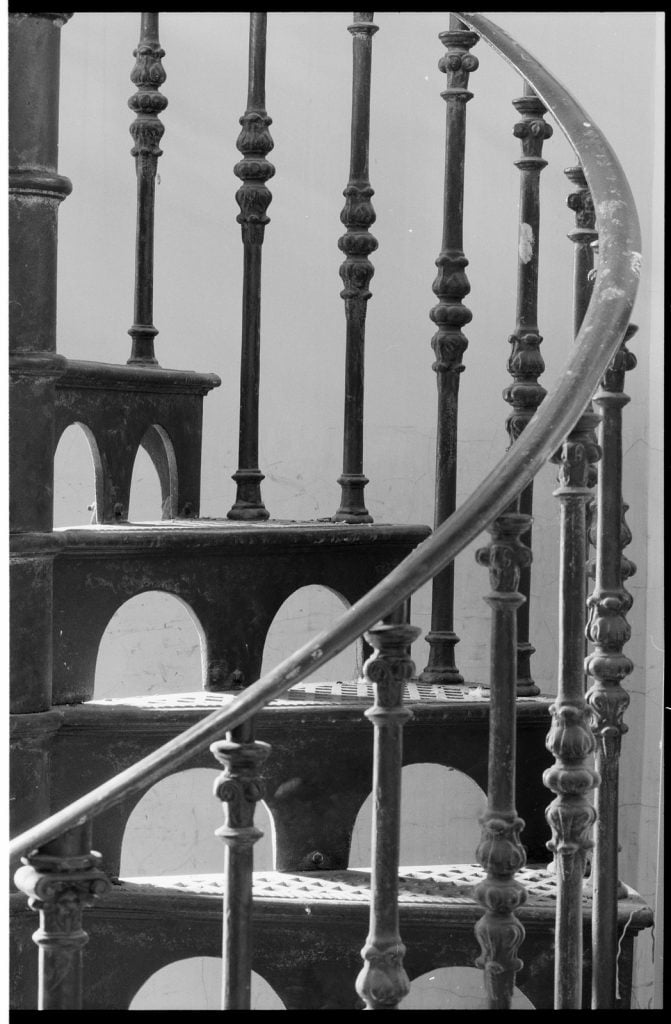


The balconies that overlook the floor of the Dome were one such storage area. While these are still filled with books today, these are duplicate volumes kept for display purposes only, their spines stiff with disuse.
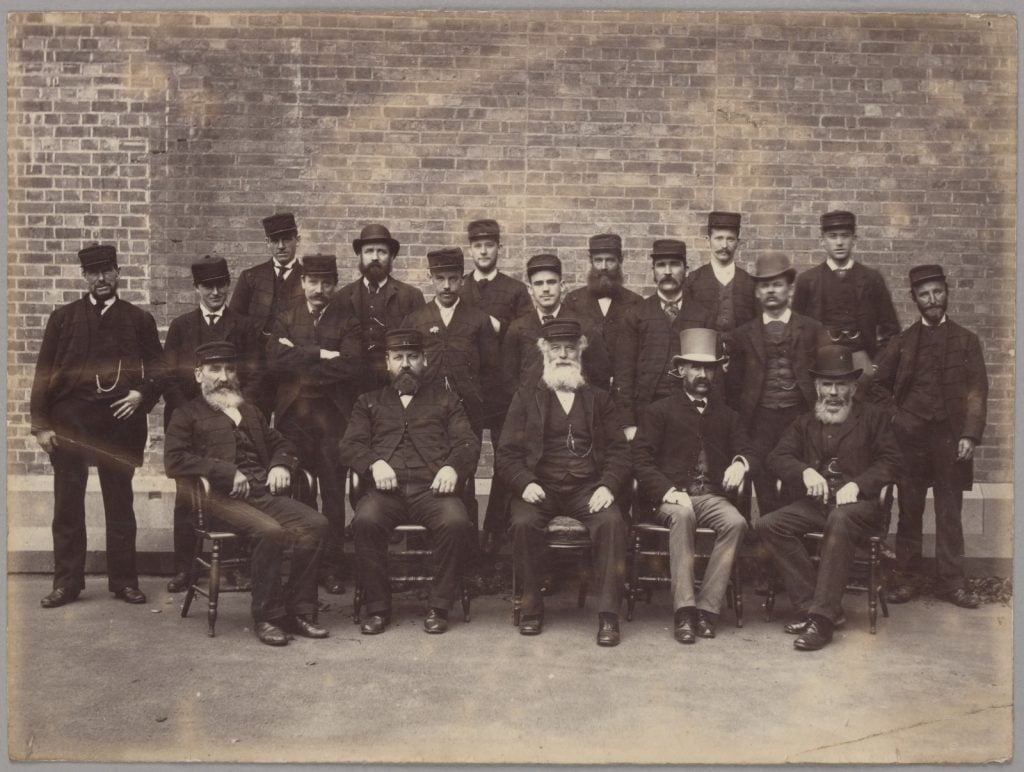
Up above the books
The spiral staircases were a popular, albeit vertigo-inducing alternative to the old lifts. One staircase in particular “beckoned the curious further, up above the books to a small landing and a locked door, beyond which was the outside of the base of the Dome itself.”1 When the restoration works commenced, evidence of these visits were revealed: lines and lines of graffiti on the plaster walls and ceiling of the Dome! You can read all about it in Marg McCormack’s La Trobe Journal article ‘Leaving Their Mark: graffiti in the Dome’.
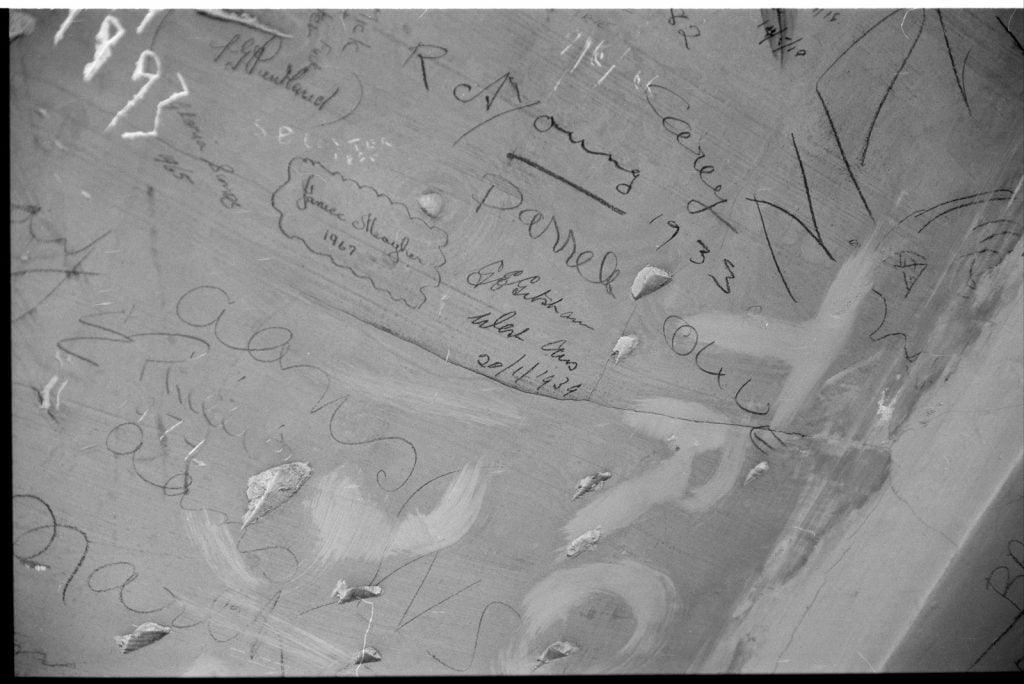
Silent library
Have you ever wondered what sits in the centre of the reading room? There used to be a technical attendant seated in this raised dais who would supervise the reading room to ensure a studious silence. The panopticon design, coupled with a mirror suspended above the dais’ desk, facilitated a full view of the reading room.
1. Central dais, the Domed Reading Room, State Library of Victoria, 1985. Photo by Viva Gibb. This work is in copyright; H88.55/6. 2. The dais, 2016. Photo by Jo Crabbe
Ribbon of words
Patrons and staff previously had to clamber up sometimes unstable wooden ladders to reach books on the top shelves in the reading room. The shelves were lowered to make room for the ribbon of words during the dome renovation.
These quotations were added to the perimeter walls during the dome’s extensive refurbishment from 1999 to 2003, an idea originally thought of by then CEO and State Librarian Frances Awcock and embraced by architect Ken Woolley. This subtle feature of 38 embossed quotes highlights responses to literature and to State Library Victoria itself. The quotations were drawn from texts in an exhaustive selection and editing process, a task which was allocated to librarian Catherine Harboe-Ree and finalised in collaboration with Awcock.
You can read Catherine’s account of the project in the La Trobe Journal.
1. Public Library, [ca. 1945-ca. 1954]. Photo by Victorian Railways. H91.50/404. 2. View of the current Domed Reading Room, date unknown. Image courtesy of State Library Victoria
The next time you visit the Domed Reading Room, take a glance above the shelves for some inspiration. Here’s one of our favourite quotes:
The Dome and its ascending galleries seemed like a giant brain vaulting towards the heavens
Arnold Zable (1947-), Dome ribbon of words
For more tales from the stacks and other great heights, read our blog from two of our long-term Librarians about how the Dome used to work.
An inspiring space
Subtle though some of the changes may seem, the Dome has transformed over the years. It has both inspired and hosted some incredible events. Here is but a small selection:
1. Domed reading room, State Library of Victoria, [ca. 1925], State Library of Victoria photographs; H11626. 2. White Night, 2019. Photo by Jo Crabbe
- There was a musical score written for, and performed in the Dome after its reopening on July 8th, 2003: Fanfare for a new dome, [2003], [music] / George Dreyfus.
- The music video for the song, Hurricane by Australian band, Faker was filmed in the Dome.
- In 2013, Ross Coulter released 10,000 hand folded paper planes from the Dome Gallery balconies down to the La Trobe Reading Room to create a visual representation of thought patterns that may have occurred in the room. This volume in the Library’s collection is made from the unfolded paper planes; each page shows the folds. https://find.slv.vic.gov.au/permalink/61SLV_INST/1sev8ar/alma9924167263607636
- From the vastness of the Dome to the miniature, a more unusual collection item by Anita Bozic is the Dome in a snow globe: snow dome: domed reading room
- The Dome has been open for White Night Melbourne over the years. Enjoy these videos of past White Nights: 2015, 2016, 2017 and 2019.
For more history on the Dome, you can visit our resources on the Dome centenary, view past exhibitions and explore the State Library Victoria – history research guide.
The World of the Book exhibition
We arrive at level 4 of the Dome galleries, one of the annulus levels that ring the upper part of the Domed Reading Room. On level 4, we find the World of the Book exhibition, which introduces us to some of the rare and most historically significant treasures in our State Collection. This exhibition is curated by our History of the Book and Arts Librarians, and is renewed annually. Here are some highlight items featured in past years: the oldest, smallest and largest items in the collection.
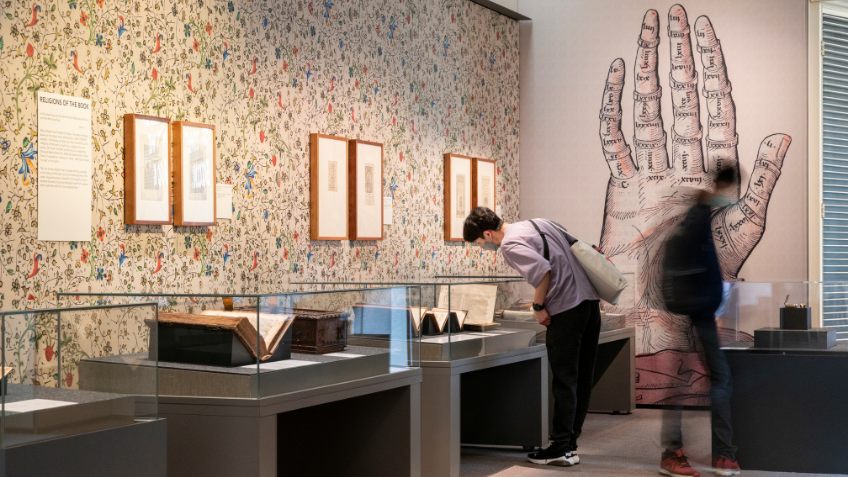
On the oldest end of materials housed in State Library Victoria is the cuneiform tablet, ca. 2050 BC (image below on the left). It’s essentially like a very old tax receipt, which records the delivery of sheep and goats. A favourite anecdote about the tablet told by librarians was that they once did a ‘page turn’ of the tablet to show the other side, and later found a note from a patron stuck to the case indicating the tablet was now upside down. Apparently when you turn a cuneiform tablet, you don’t turn it right to left, but as few staff read cuneiform, no one had noticed. You can see this in our 2023 World of the Book exhibition.

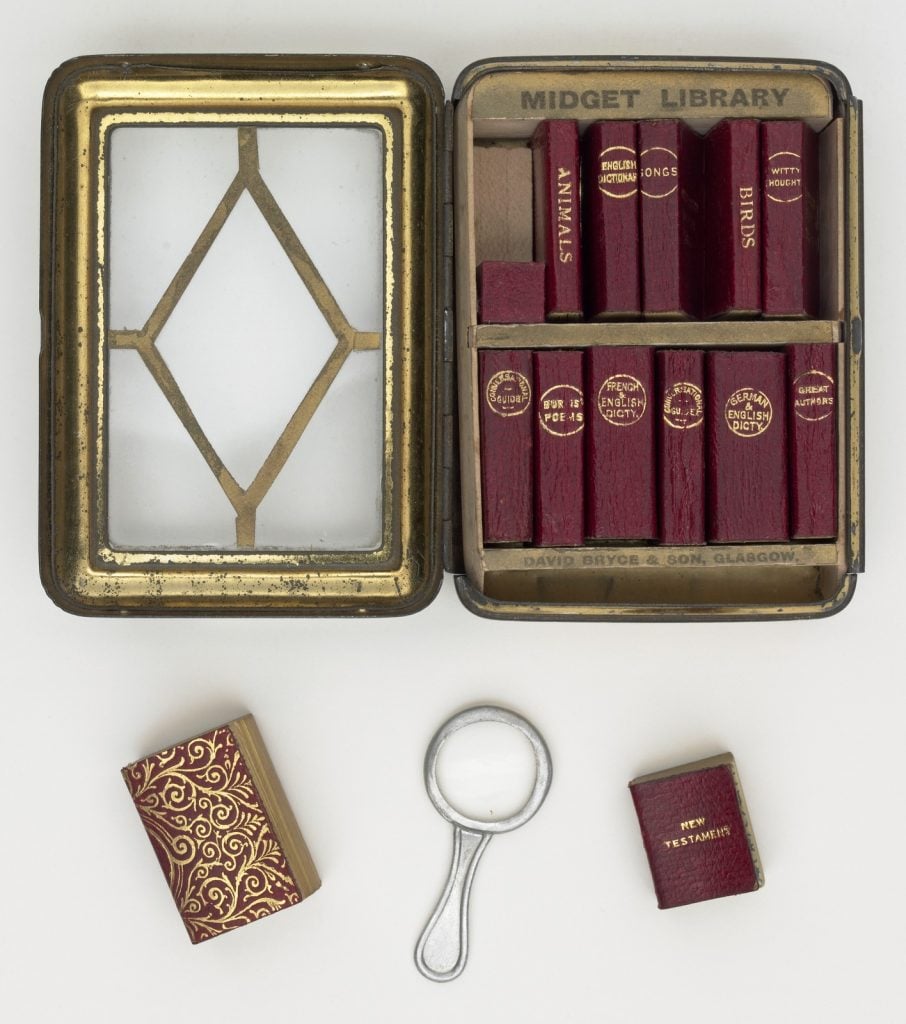
Possibly c. 1895, the so-called ‘midget library’ of 12 volumes comes in its own case, decorated like a bookshelf of the time, and includes a magnifying glass (image above on the right). Before the age of the internet, some of the titles thought to be essential to travel with included The smallest French/English dictionary in the world, a Tiny alphabet of animals and Golden thoughts from famous authors. Though this is not currently on display in the 2023 exhibition, you can still enjoy the digitised image of this online.
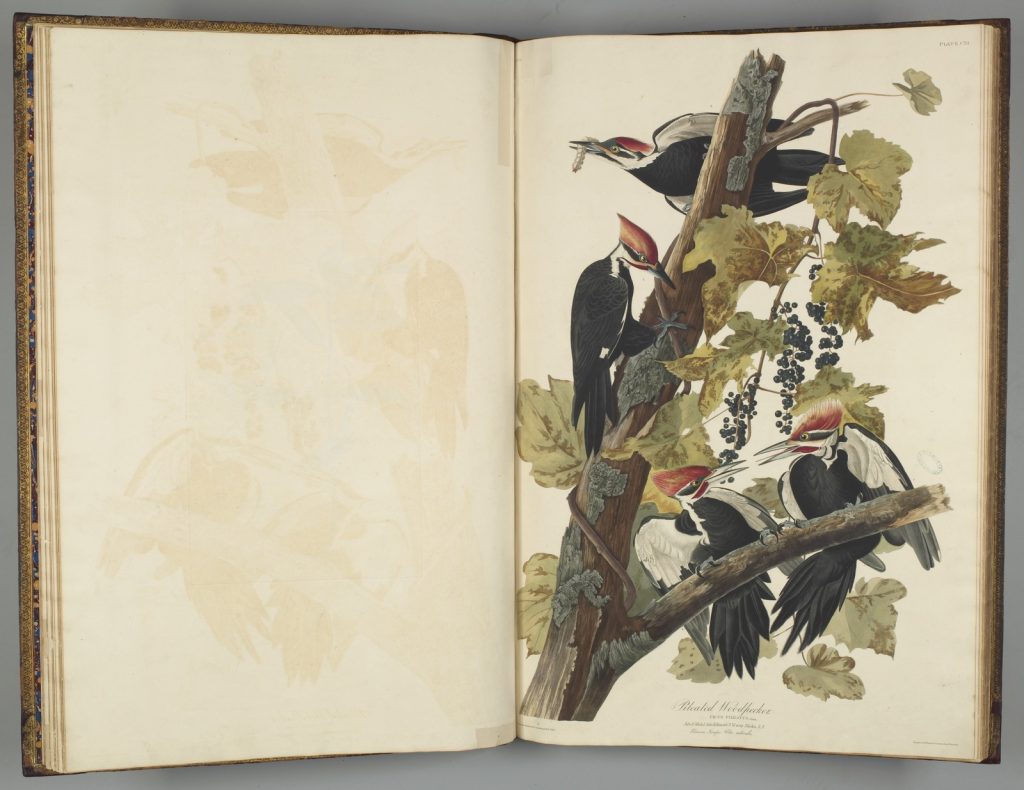
If the ‘midget library’ is among the smaller materials held at the library, elephant folios are among the largest. Each time material is refreshed in the exhibition, a page is turned in the library’s volumes of Audubon’s Birds of America. John James Audubon (1785-1851), a self-trained naturalist and artist, used freshly killed specimens of birds that were wired into life-like positions to create large, arresting illustrations. Audubon’s Birds of America (originally sold in 87 parts, the Library’s copy is bound in four volumes, with the complete set containing 435 portraits of North American birds) is among the larger publications held by the Library and is in a size known as a double elephant folio with pages over a metre high. The tale of how the Library came to acquire its copy is also an intriguing and tragic one.
You can read the full story in the La Trobe Journal, watch a video introduction and view our digitised copy of Birds of America online.
After being on display from 2005 to March 2023, Birds of America is now taking a break from being exhibited. You can enjoy digitised pages from volume 3 and part of volume 2 online.
Explore the latest iteration with our 2023 World of the Book exhibition!
Dome 1 collection storage

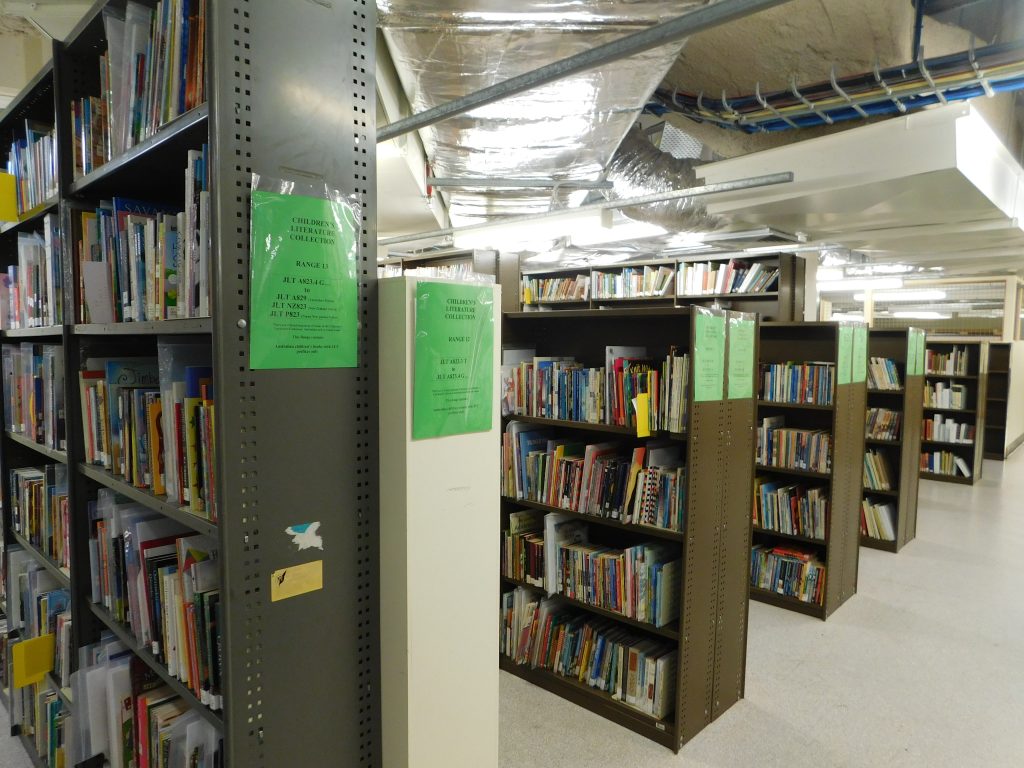
With millions of print materials in our collections, there isn’t enough space on our open access shelves to display it all. Moving to the back-of-house areas, we enter Dome 1 collection storage, one of the onsite stores situated directly beneath the Domed Reading Room. Here we find Australian art and artist (AAA) files, Theatre programmes, and our Riley & ephemera Collection (including some realia), among other collections. Sometimes an overlarge poster, sometimes a small slip of paper – taken together these materials help us to continue bearing witness to significant movements and moments in Victorian history and culture.

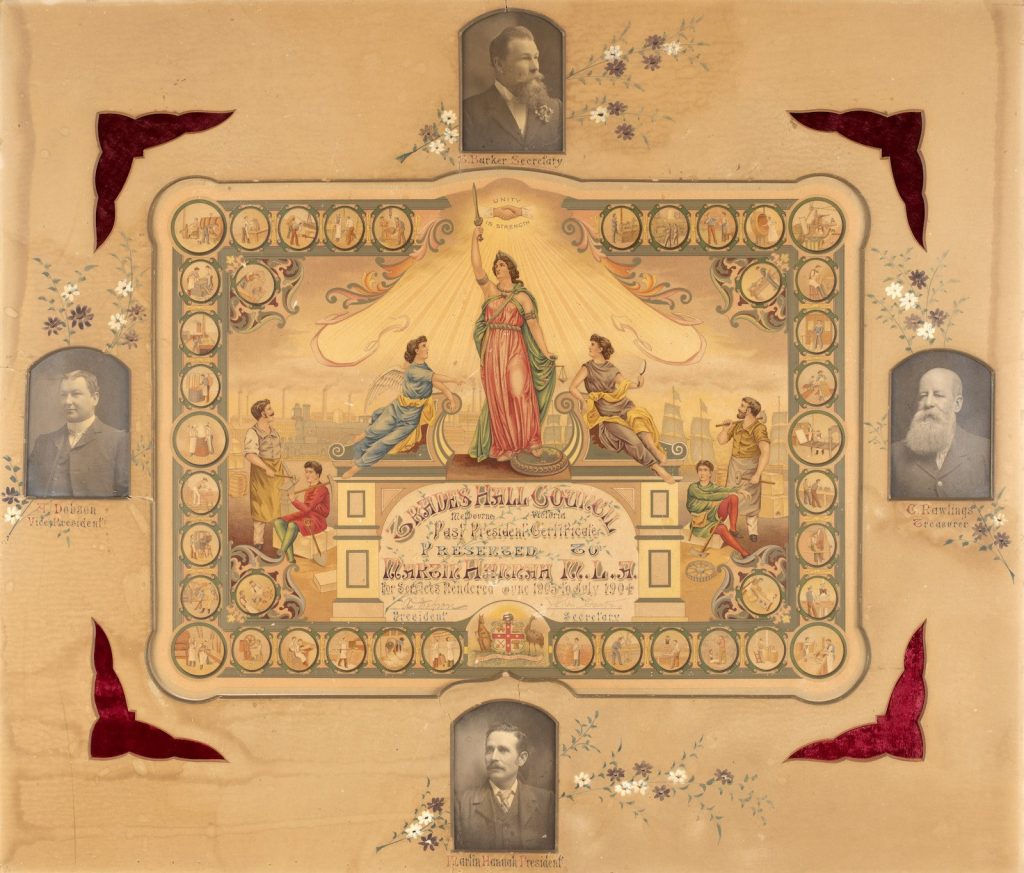
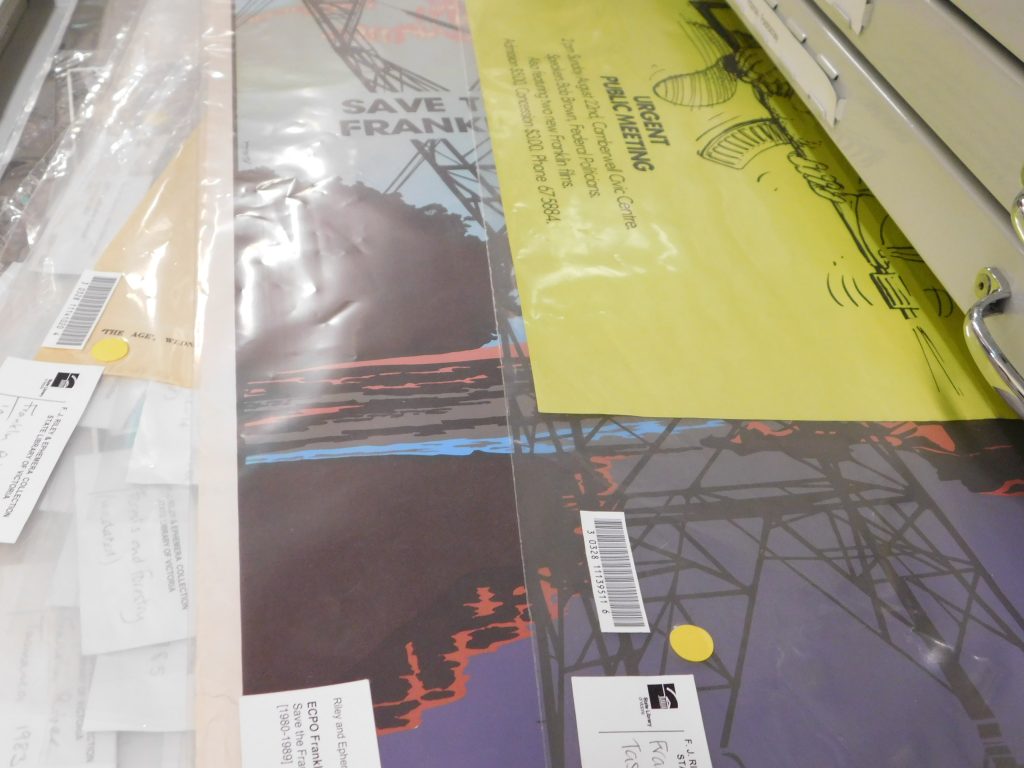
Among many surprising items of realia in the Library’s collection is a 105+ year old Huntley & Palmers cookie (Army Biscuit No. 4) which features a hand-carved inscription, “The reason why a solider has to have good teeth”. The inedible edible was sent back to Australia by Lieutenant Eric Harding Chinner of Adelaide, who was killed in 1917 in World War I.
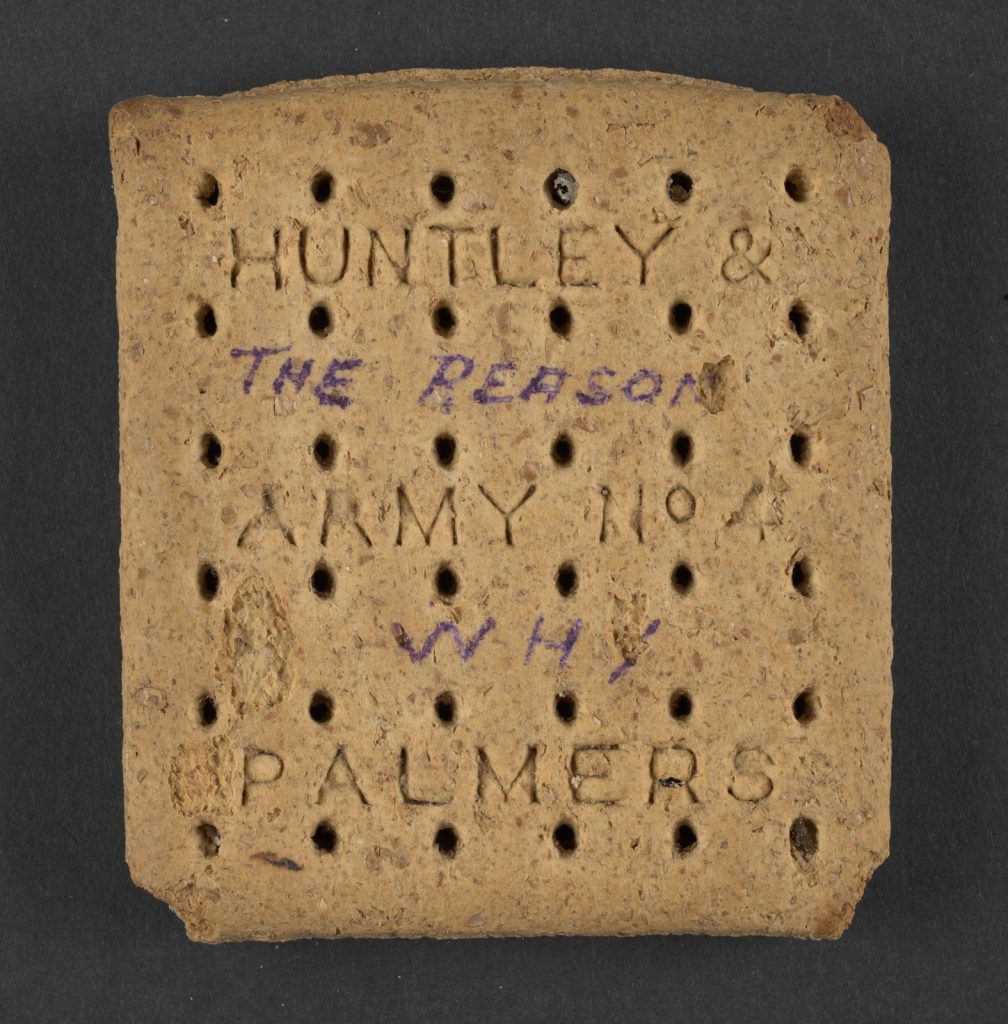

Elephant Lift
Deeper in the Library, the Elephant Lift is an architectural marvel from elevator engineers Johns & Waygood. It’s the oldest lift in the Library and still in use today, though most staff would admit to feeling some trepidation at the thought of travelling in it.
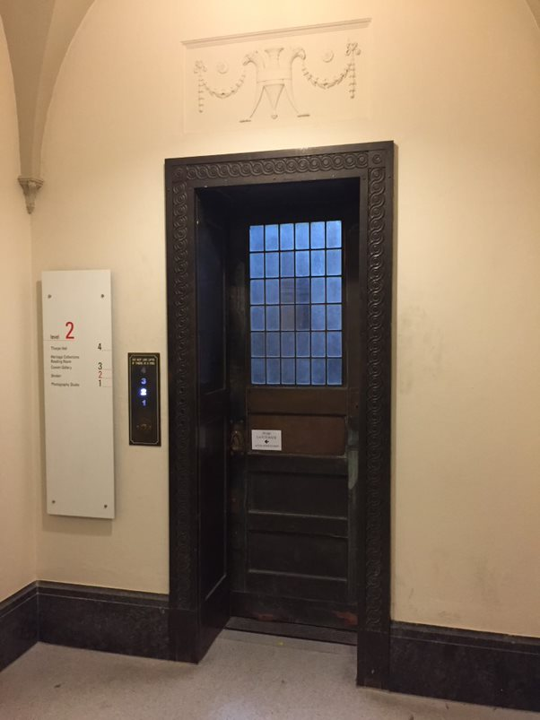
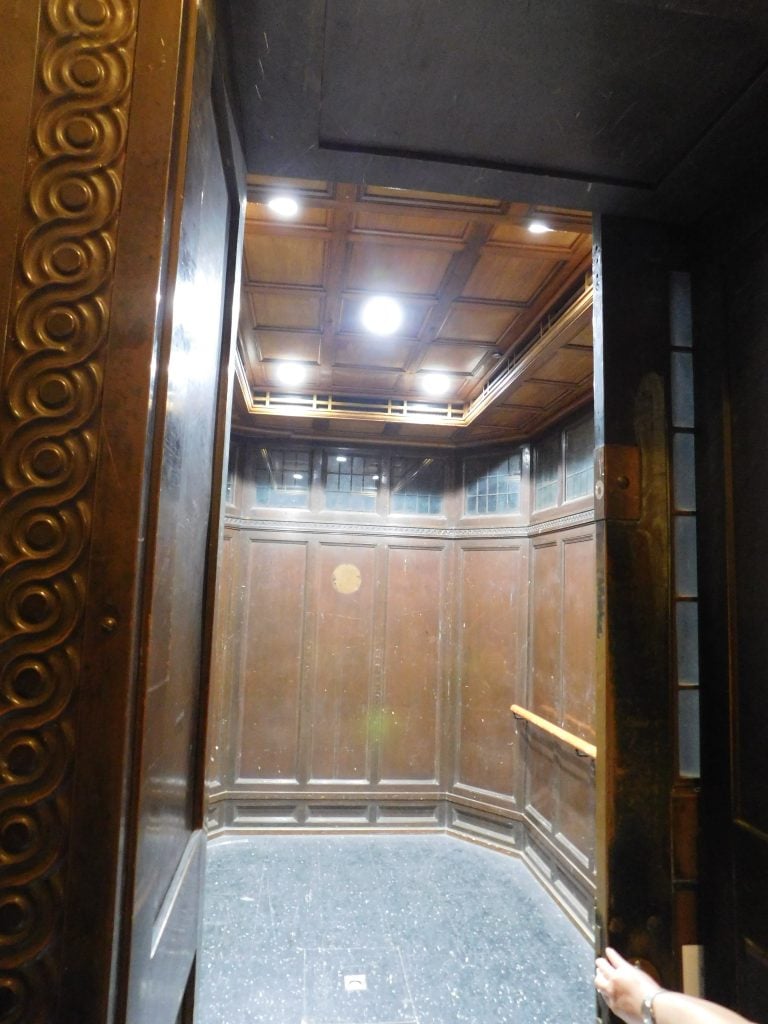
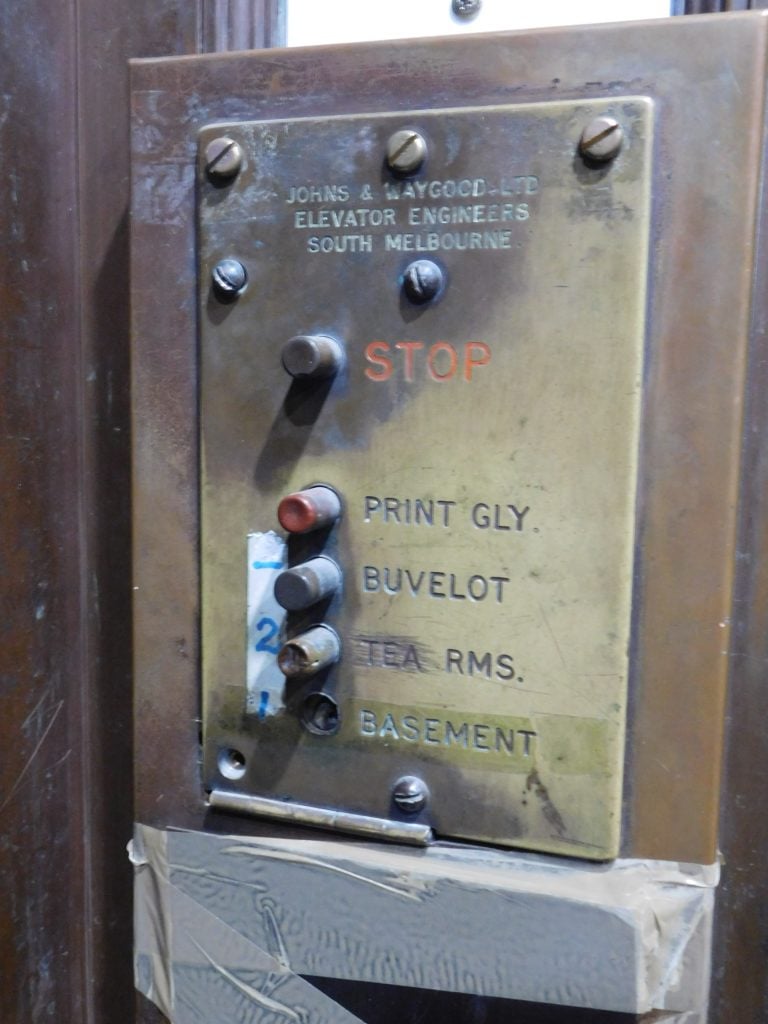
Rumours abound about where it got its name, whether from transporting elephant specimens back in the days when the Library shared its premises with the Museum, or because of the large-size publications called ‘elephant folios’ that are housed in the Library’s collection. The wood panelling and craftsmanship of the lift takes you back to an earlier age. However, it has a reputation for breaking down. The Elephant lift is marked on this plan in the Library’s collection as Lift No. 2.
Mystery of the Pendulum Staircase
The Pendulum Staircase is a large central well, enclosed by a handrail with a white marble floor. At the foot of the staircase there is a diagram of a compass, applied to the floor in black and orange paint. The name for this staircase comes from the Foucault pendulum which was suspended from the coffered plaster ceiling for about 10 years from the 1970s, during the period of use by the Museum. The pendulum has since been removed but its fixing point is still visible within the space (see the image below on the left).



The Foucault pendulum showed the rotation of the earth over 24 hours. The pendulum (if it was there) doesn’t move, the earth does. If we had a time lapse recording, the pendulum would appear to move.
Word is that it was taken down because naughty children tried to swing on it and threw paper planes at it. The mystery of the pendulum: neither the Library, nor the Museum know where it is now …
Catacombs
Finally, we reach the catacombs themselves. The catacombs are located under the Redmond Barry Reading Room (formerly McCoy Hall of the Museum) directly under McCoy Hall. The basement catacombs are part of the original construction of the Library. This extensive storage space was home to the Museum’s vast collection not on display in the hall above. McCoy Hall was named after Frederick McCoy who was Professor of Natural History at the University of Melbourne and was appointed Director of the National Museum.

The Museum moved out of the Library over a period of time starting in the late 90s to its current location in Carlton Gardens. Now the catacombs are used to store various Library items including furniture.
One peculiar case relating to the catacombs: during an inventory in 1995 two rare artefacts were found belonging to Charles Darwin. The two preserved birds, one a finch, were still tagged in the great English naturalist’s handwriting and were an amazing discovery. As some of you may know, the finch was the original animal Darwin studied to prove his ‘origin of species’ theory in 1859. The two birds found in the catacombs were collected and preserved by Darwin during his voyage around South America (the Galapagos Islands) on the HMS Beagle in 1830.
The space is largely intact in plan, form and fabric, including sections with the original dirt flooring.
Card catalogue
One of the highlights of our catacombs is the original Library card catalogue, stored in one of the catacombs. The card catalogue was created in 1884. Prior to that, the Library published its catalogue in book form. We still have complete sets of the book catalogues in our stacks. These particular cards hold 80 years’ worth of information and it’s estimated that they record three quarters of a million titles!
1. Interior of The Queen’s Hall, showing a member of staff sitting at the Enquiries window, [ca. 1910], H4716. 2. View of some of the card catalogue drawers in the catacombs, present day, 2022. Photo by Penny Chan.
The creation of a card catalogue improved the search process, offering librarians – and visitors – the option to search by title, author or subject.
The writing on the earlier cards is copperplate script. One of the qualifications of being a librarian in the1800s was to have excellent penmanship.
Mr Tulk, the first appointed Librarian in 1856, produced a catalogue to the 27,000 books in the Melbourne collection in 1862 and a supplement to this was issued early in 1865 (original copy in MS). A new catalogue of 101,000 books was produced by the staff, assisted by John Firth, in 1878 and another with a supplement, in 1880.
The card catalogue is still referenced occasionally should a problem arise on the digital archive.
Though not the same thing, there are still index cards in use on the floor of the Library today for specific subject areas in the form of the newspaper card indexes and a number relating to music and arts reside in the Arts Reading Room.
West link staircase
Let’s loop back to the West link staircase, just outside of Hansen Hall, where we first began this exploration. It’s worth pausing at the staircase, which is a fine embodiment of Victorian local history with its limestone sourced from Buchan, Victoria, and its steps worn by the tread of innumerable visitors over its life.
The recent redevelopment saw its steps covered with a layer of marble to protect the original staircase. The original banisters are protected by glass screens. This marble was imported from Italy in the 1850s, during the gold rush and is said to be of the same type of marble that Michaelangelo’s David was sculpted from.

If you take a closer look at the pillars, you can see fine, wispy white impressions of fossils. A reminder to us all: when you walk through the Library, you are literally traversing layers of history. We welcome you to share and add your own story to the Library. After all,
Nobody has the last word.
Brenda Walker, Dome ribbon of words
Explore further
- State Library of Victoria – history research guide
- ‘Access all areas’ video series
- What’s on events page

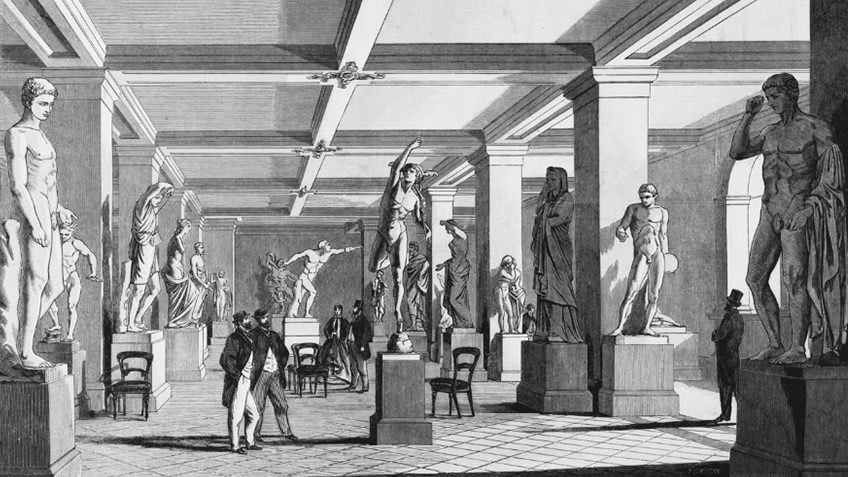



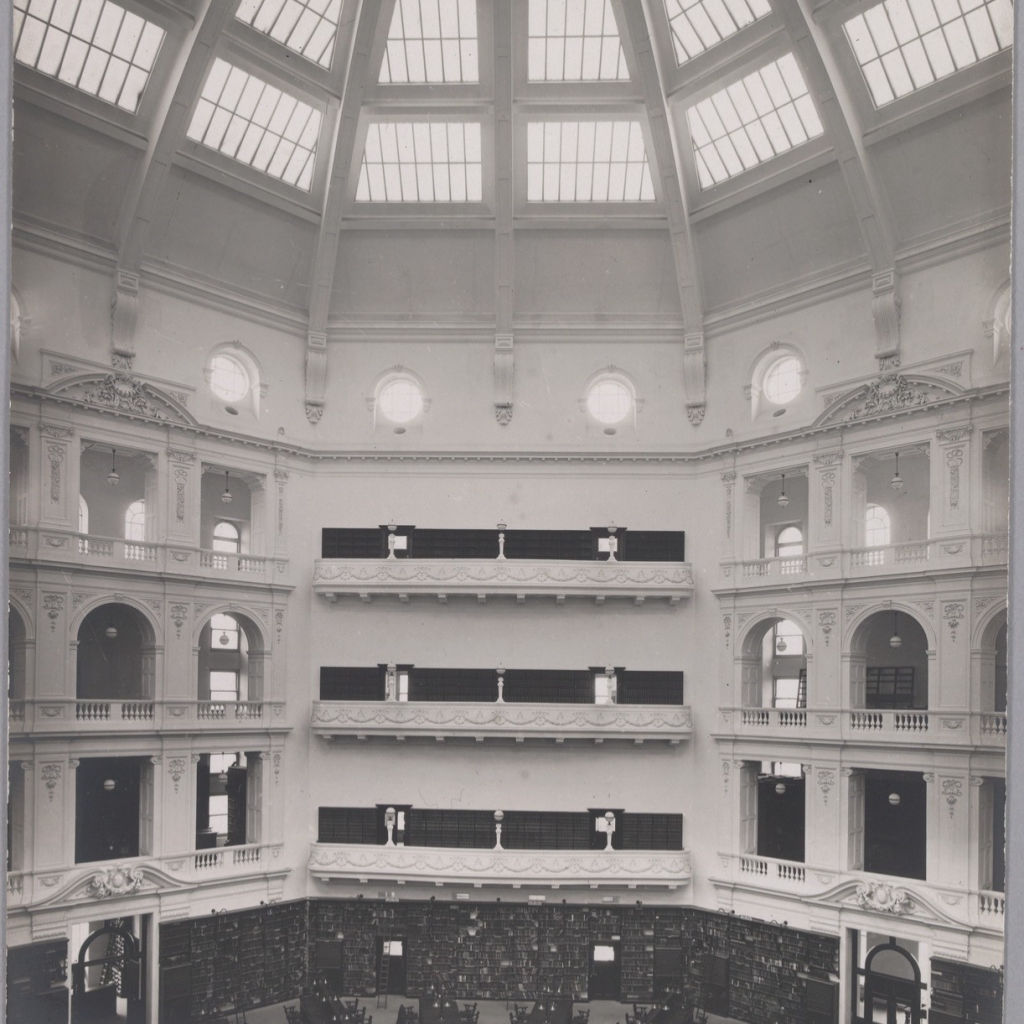

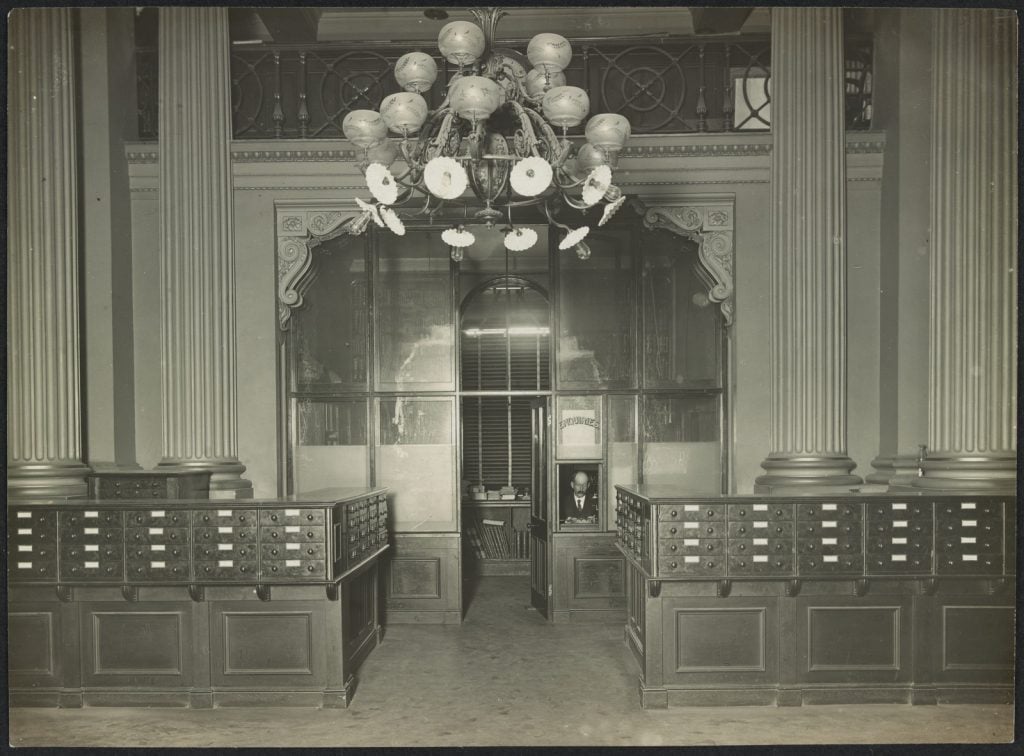


Wonderful memories. Wish I had been able to do the tour , and I hope it can be repeated. During the period I was employed there,c1960-1966, the dais in the Reading room was staffed by a ‘technical attendant’, as they were then known , and not by a librarian.
Hi Maurice, thanks for sharing. Appreciate the correction; I’ve updated the text to “technical attendant”. It’s a shame you couldn’t make the tour this time, but hopefully we’ll see you next time around – it’d be lovely to hear some of your own stories!
Congratulations penny and jo. This is a stunning and engaging blog- covering all that will be revealed in the tour
Regards
Judy Stanton
Vo;unteer Tour Guide
Thanks, Judy!
Thank you for the information on the fate of the sculptures originally in Palmer Hall. I am often asked on History of the Library tours
Judy Stanton
I wonder what became of the sculptures in the Sculpture Gallery? The appear magnificent and maybe need to be repatriated from some private homes?
If only we could do that, Brian! Those were actually plaster casts of famous sculptures in the Gallery, created in the 19th Century. Over time they fell out of favour and use, and were ultimately destroyed. For more of that story, you might be interested in reading:
– Galbally, A. (1988). The Lost Museum: Redmond Barry and Melbourne’s Musée des Copies’. Australian Journal of Art, 7(1), 28-49. https://doi.org/10.1080/03146464.1988.11432895
– Gregory, J. (2021). The rise and fall of Melbourne’s plaster cast collection. The La Trobe Journal, (106), 32-47. https://www.slv.vic.gov.au/stories/la-trobe-journal/la-trobe-journal-no-106-september-2021
A very informative behind-the-scenes view of the Library.
(One of the copies of the Catalogue of the Melbourne Public Library for 1861 is inscribed
‘Presented to Charles Joseph Latrobe [sic] Esquire C.B., by the Trustees of the Library founded by him, in testimony of respect’, signed ‘Redmond Barry, Nov. 28, 1862’, which reminds us that it was actually La Trobe who ‘founded’ the Library.)
I thoroughly enjoyed this comprehensive and intriguing tour of the library. A magnificent building in my home town that I now know I should have visited more frequently! Glad to hear that the leaky dome has been repaired. The digitised copy of Birds of America – a privilege to view. A truly amazing collection of bird illustrations.